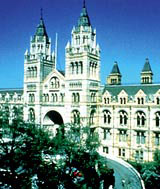Balance between in-house and external exhibition design must be found

Having been designing exhibitions for 42 years, I write in response to your pieces on museums (News, News Analysis and Comment, DW 5 April).
The editor’s comment could have been written ten or 15 years ago, when the change you talk about really started, as a result of the withdrawal of funding by the Thatcher Government; the first design department to go was the one in the Natural History Museum.
The living proof of such change is that the Museum and Exhibition Design Group, formed 25 years ago, consisted originally of 90 per cent in-house designers and 10 per cent freelance. The reverse is now the case.
Both in-house and freelance designers have great advantages and these can be fairly balanced, but phrases in the News Analysis such as “whereas commissioning less mainstream designers, not normally associated with exhibitions, can add an unusual, witty touch to a project” are guaranteed to incite brick-throwing rage.
Exhibition design is a specialisation within the design perspective. When I was head of design at a national museum, my in-house team was extraordinarily innovative because of the mix of writers, technicians, curators and graphic and 3-D exhibition specialists and we worked very happily with freelance practices.
Margaret Hall’s larger design department at the British Museum has, among other such units, done the same and also proved a marvellous maturing ground for designers now in freelance consultancies. But most importantly the complete disappearance of in-house teams will lead to an almost total lack of the kind of research that allowed us all to learn from our mistakes and to be innovative.
A balance must be found. Sadly, while there are many excellent and experienced specialist freelance consultancies, some of the more recent ones were no doubt inspired by an article a few years ago in an architectural magazine which advised architects to do exhibition work because it was easy, fun, quick and well paid. They are making basic mistakes in the complex business of three-dimensional communication that most experienced designers naturally avoid.
Many recent, lauded and even award-winning exhibitions or venues that I have visited have been so riddled with such errors, that I have almost become ashamed to call myself an exhibition designer.
Giles Velarde
gilesvelarde@gva-fts.freeserve.co.uk
-
Post a comment




